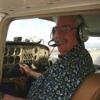
Sign in to follow this
Followers
0

Question on descent for real 737 Drivers.
By
Bobsk8, in PMDG 737NGX | 737NGXu


By
Bobsk8, in PMDG 737NGX | 737NGXu